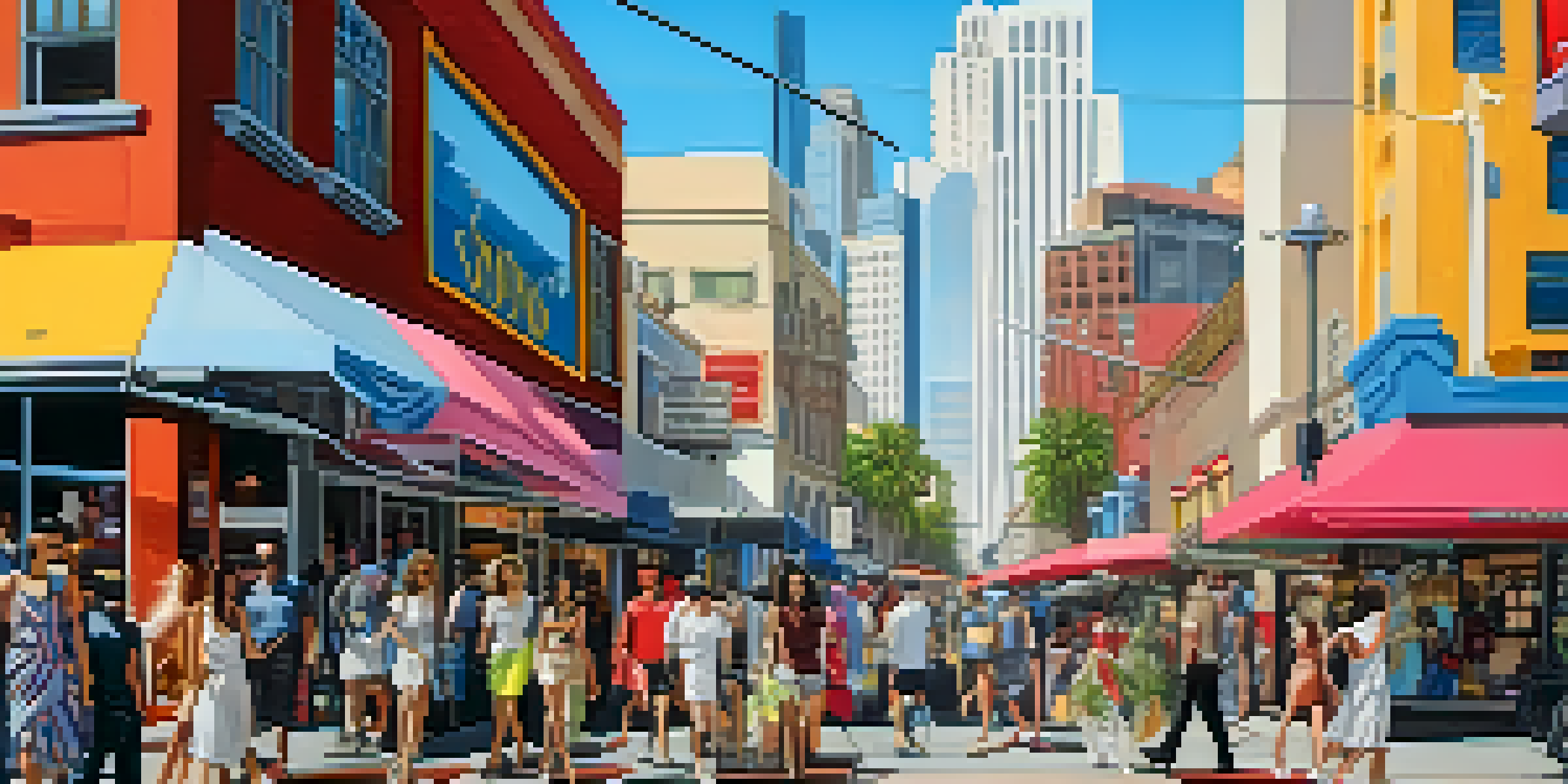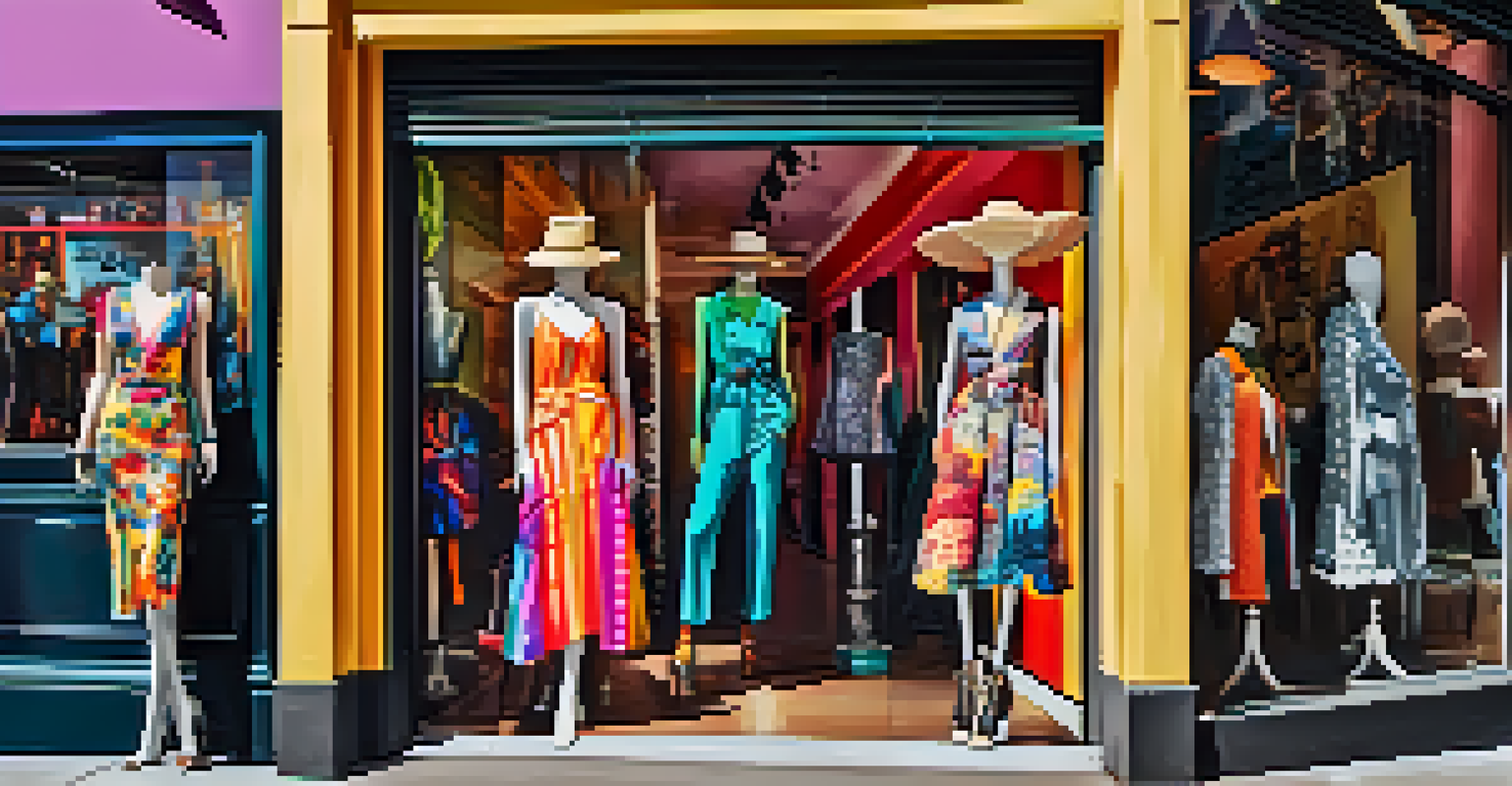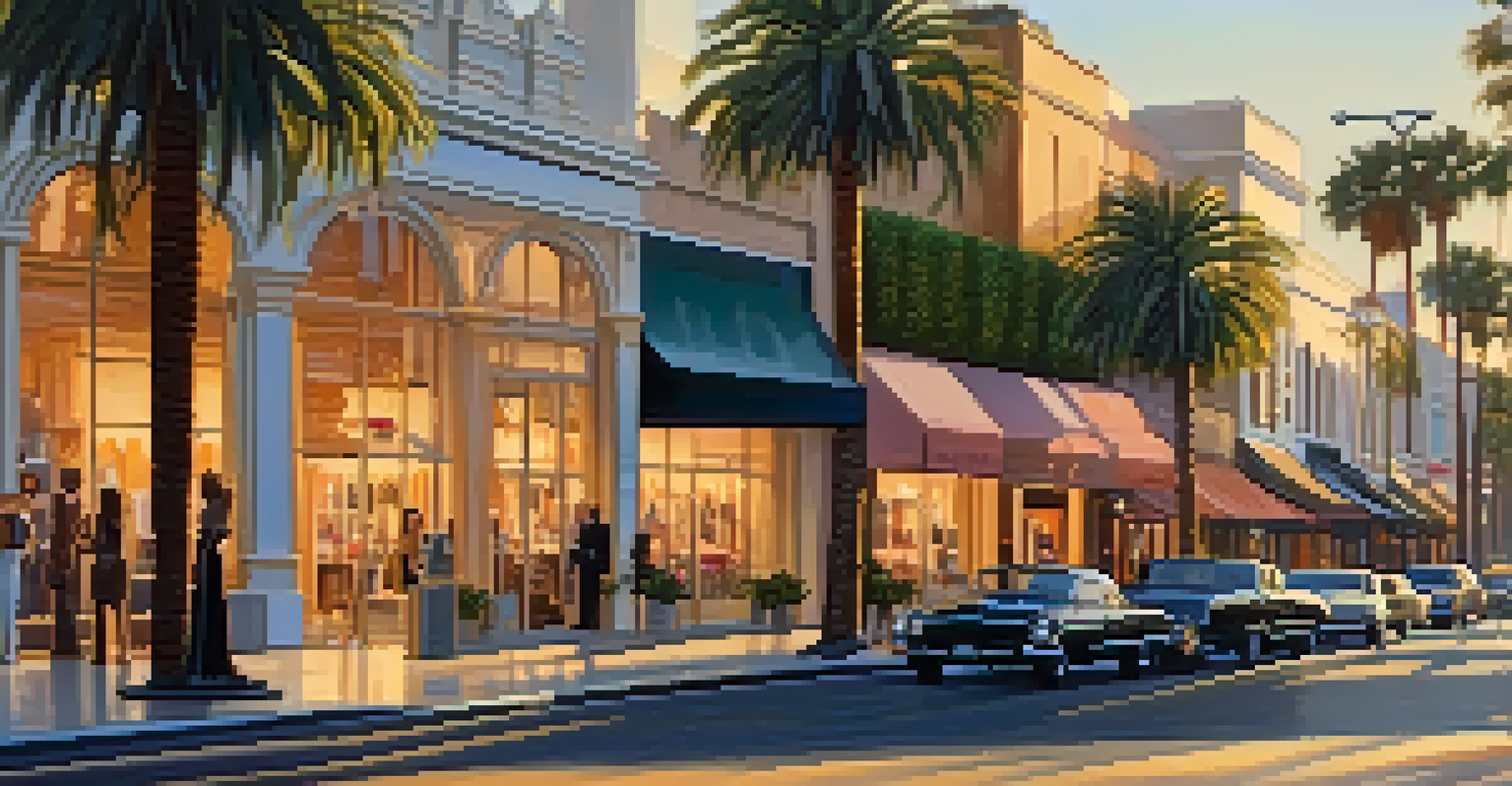The Rise of Fashion Districts in Los Angeles and Their Impact

What Are Fashion Districts and Their Origins?
Fashion districts are specific areas in a city known for a concentration of fashion-related businesses, including boutiques, showrooms, and design studios. In Los Angeles, these districts have evolved from a mix of historical garment manufacturing and modern retailing. The roots of LA's fashion scene can be traced back to the early 20th century when it became a hub for garment production due to its favorable climate and skilled labor.
Fashion is the armor to survive the reality of everyday life.
As the city grew, so did the influence of Hollywood, which began to shape not only the entertainment industry but also fashion trends. Designers started to flock to LA, inspired by the vibrant culture and diverse communities. This led to the establishment of districts like the Fashion District in Downtown LA, which has become a melting pot for creativity and innovation in fashion.
Today, these districts are not just about shopping; they serve as a platform for emerging designers and brands to showcase their work. They are dynamic spaces that reflect the ever-changing landscape of fashion, making them essential to understanding the industry’s evolution in Los Angeles.
Key Fashion Districts in Los Angeles
Los Angeles is home to several key fashion districts, each with its own unique flavor and offerings. The most notable is the Fashion District in Downtown LA, which boasts over 1,000 fashion-related businesses. This area is a hotspot for both local and international designers, retailers, and manufacturers, making it a vital part of the fashion supply chain.

Another significant area is Melrose Avenue, known for its trendy boutiques and vintage shops that attract fashion enthusiasts from all over. This district embodies the eclectic and edgy style that LA is known for, featuring both high-end and streetwear brands. The energy of Melrose Avenue is palpable, with its vibrant street art and bustling foot traffic.
Fashion Districts Reflect Culture
Fashion districts in Los Angeles serve as cultural landmarks, showcasing a blend of styles and trends that highlight the city's diverse identity.
Lastly, we can't forget about West Hollywood, which has established itself as a luxury fashion destination. This area is home to renowned designer boutiques and upscale shopping experiences, attracting celebrities and style icons. Each of these districts contributes to the rich tapestry of LA's fashion scene, making it a diverse and exciting place to explore.
The Role of Technology in Fashion Districts
In recent years, technology has played a pivotal role in transforming fashion districts in Los Angeles. From online shopping to social media marketing, the way consumers engage with fashion has changed dramatically. Local businesses are leveraging technology to reach a broader audience, allowing them to compete with larger brands and e-commerce giants.
Clothes mean nothing until someone lives in them.
For instance, many boutiques in the Fashion District have adopted e-commerce platforms to complement their physical stores. This approach not only increases sales but also enhances the customer experience by offering convenience. Social media has also become a powerful tool for these businesses, enabling them to showcase their collections and connect with customers in real time.
Moreover, technology is fostering collaboration among designers, manufacturers, and retailers. Innovations like 3D printing and virtual fashion shows are redefining traditional processes, allowing for quicker turnaround times and more sustainable practices. As technology continues to evolve, it will undoubtedly shape the future of fashion districts in Los Angeles.
Impact on Local Economy and Job Creation
The rise of fashion districts in Los Angeles has had a significant impact on the local economy. These areas not only attract tourists and shoppers but also create a wealth of job opportunities. From designers and tailors to retail staff and marketing professionals, the fashion industry supports thousands of jobs in the region.
Furthermore, fashion districts often stimulate growth in related sectors, such as hospitality and transportation. With more people visiting these areas, local restaurants, cafes, and hotels benefit from the influx of visitors. This symbiotic relationship helps to create a vibrant community that thrives on fashion and creativity.
Technology Transforms Fashion Retail
The integration of technology in fashion districts has revolutionized how local businesses operate, enabling them to compete with larger brands through e-commerce and social media.
Additionally, the presence of fashion districts encourages entrepreneurship. Many designers start their own businesses in these areas, contributing to a culture of innovation and collaboration. This entrepreneurial spirit is vital for the overall economic health of Los Angeles, as it fosters diversity and resilience within the local economy.
Cultural Significance of Fashion Districts
Fashion districts are not just commercial hubs; they are cultural landmarks that reflect the identity of Los Angeles. They serve as a crossroads where different styles, trends, and cultures converge, creating a unique fashion narrative. This melting pot of influences allows for a rich tapestry of creativity that characterizes LA's fashion scene.
Events like LA Fashion Week and pop-up shops further highlight the cultural significance of these districts. They provide a platform for local designers to showcase their talent and connect with the community. These events also attract media attention, helping to put LA on the global fashion map.
Moreover, fashion districts often incorporate elements of art and music, contributing to the overall cultural landscape of the city. Street art, live performances, and fashion installations can be found in these areas, making them vibrant spaces where creativity thrives. This cultural fusion enhances the appeal of fashion districts, drawing in a diverse audience and enriching the community.
Challenges Faced by Fashion Districts
While fashion districts in Los Angeles have experienced significant growth, they also face several challenges. One of the primary issues is gentrification, which can lead to the displacement of local businesses and residents. As property values rise, smaller boutiques may struggle to afford rent, threatening the diversity that makes these districts unique.
Additionally, the fast fashion industry poses a challenge to local designers and retailers. With large brands producing cheap, trendy clothing at a rapid pace, smaller businesses often find it difficult to compete. This can result in a loss of authentic craftsmanship and creativity, as the pressure to keep up with trends takes precedence.
Economic Impact of Fashion Districts
Fashion districts play a crucial role in boosting the local economy by creating jobs and stimulating growth in related sectors like hospitality and transportation.
Lastly, the ongoing impact of the COVID-19 pandemic has forced many fashion districts to adapt quickly. With restrictions on in-person shopping, businesses have had to pivot to online sales and find new ways to engage with customers. This adaptation is crucial for survival, but it also highlights the need for resilience and innovation within the industry.
The Future of Fashion Districts in Los Angeles
Looking forward, the future of fashion districts in Los Angeles appears promising yet complex. As consumer preferences shift towards sustainability and ethical fashion, districts will need to adapt to meet these demands. This could mean an increased focus on local production, eco-friendly materials, and transparent supply chains.
Moreover, the integration of technology will continue to reshape the fashion landscape. Innovations such as augmented reality shopping experiences and AI-driven design tools could enhance the consumer experience while streamlining operations for local businesses. Embracing these advancements will be key for fashion districts to remain relevant in a rapidly changing industry.

Ultimately, the resilience and creativity of the fashion community in Los Angeles will drive the evolution of these districts. As new trends emerge and challenges arise, the ability to adapt and innovate will ensure that fashion districts remain vibrant cultural and economic hubs for years to come.